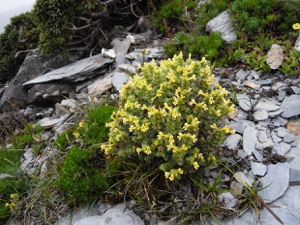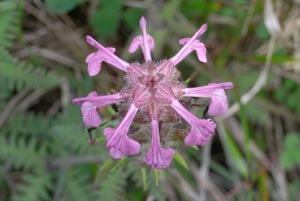Investigating the impacts of environmental change on Taiwanese mountain plants

Rapid climate change will impose strong pressures on species to track the climate to which they are adapted. The resulting demographic and evolutionary pressures on plants will be intense. Consequently, we are likely to see rapid alterations to plant population sizes, range shifts and contractions, and changes in the genetic structure of populations. Those species that are unable to respond to the changing climate may ultimately go extinct resulting in a potential biodiversity crisis for endemic-rich montane regions of the globe where migration between mountains is severely restricted.

This project combines molecular marker, survey and demographic data to assess the impact of climate change on the diversity, growth and establishment of key montane plant species. The work will identify the geographical distribution of diversity within species and the areas of the species range that are most likely to be impacted by population losses due to climate change and habitat fragmentation. Additional work will look at changes in the growth and reproduction of species over time. In combination, the work will allow us to produce a first assessment of the likely impacts of climate change on the Taiwanese mountain flora.
This is collaborative project with Chang Hung-Chou and Tsurng-Juhn Huang of the Institute for Ecology and Evolutionary Biology, China Medical University, Taichung. The project is co-funded by the Royal Society and the National Science Council of Taiwan.
Related publications
Steinbauer MJ, Field R, Grytnes J-A, Trigas P, Ah-Peng C, Attorre F, Birks JB, Borges PAV, Cardoso P, Chou CH, De Sanctis M, de Sequeira MM, Duarte MC, Elias RB, Fernández-Palacios JM, Gabrie R, Gereau RE, Gillespie RG, Greimler J, Harter DEV, Huang T-J, Ir SDH, Jeanmonod D, Jentsch A, Jump AS, Kueffer C, Nogu!e S, Otto R, Price J, Romeiras MM, Strasberg D, Stuessy T, Svenning JC, Vetaas OR, Beierkuhnlein C (2016) Topography-driven isolation, speciation and a global increase of endemism with elevation. Global Ecology and Biogeography, 25, 1097–1107
Ruiz-Benito P, Madrigal-González J, Young S, Mercatoris P, Cavin L, Huang T-J, Chen J-C, Jump AS (2015) Climatic stress during stand development alters the sign and magnitude of age-related growth responses in a subtropical mountain pine. PLOS One DOI: 10.1371/journal.pone.0126581
Greenwood S, Jump AS (2014). Consequences of treeline shifts for the diversity and function of high altitude ecosystems. Arctic, Antarctic, and Alpine Research, 46, 829-840
Jump AS, Huang T-J, Chou C-H (2012). Rapid altitudinal migration of mountain plants in Taiwan and its implications for high altitude biodiversity. Ecography, 35, 204-210.
Chen J-C, Chen C-T, Jump AS (2012) Forest disturbance leads to the rapid spread of the invasive Leucaena leucocephala in Taiwan International Archives of the Photogrammetry, Remote Sensing and Spatial Information Sciences, XXXIX-B2, 35-40 doi:10.5194/isprsarchives-XXXIX-B2-35-2012
Two thirds of Taiwan is occupied by mountains, rising up to 3,950 m in elevation. The Taiwanese flora includes more than 4,200 species of vascular plants, of which at least 25% are endemic. The high plant diversity of Taiwan’s mountains is believed to be particularly important for maintaining functional diversity and stability of ecosystem processes following the extreme climatic events to which the island is subjected. However, rapid changes in climate are already impacting the populations of many species in the mountains of Taiwan, threatening their future viability.

Pedicularis verticillata